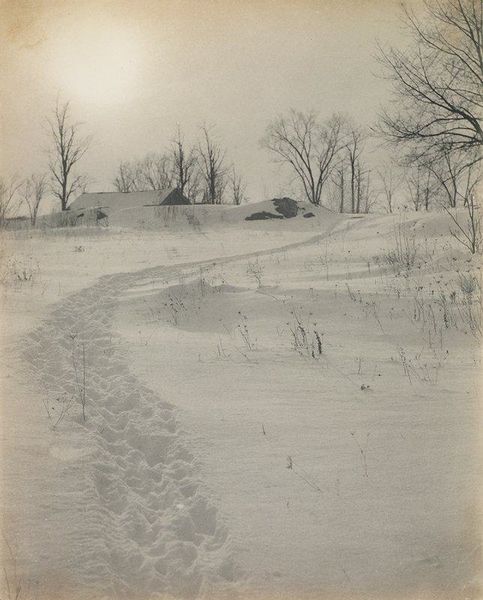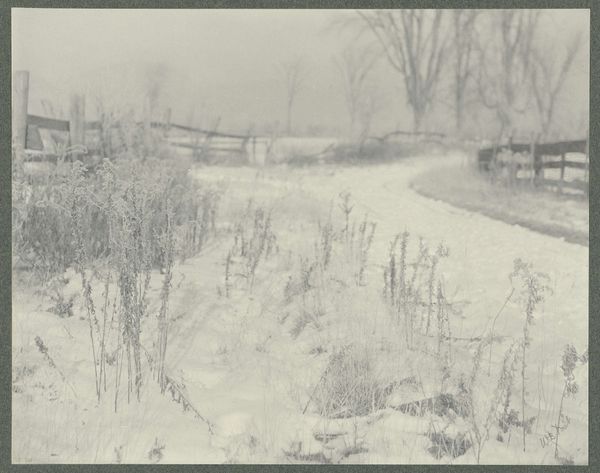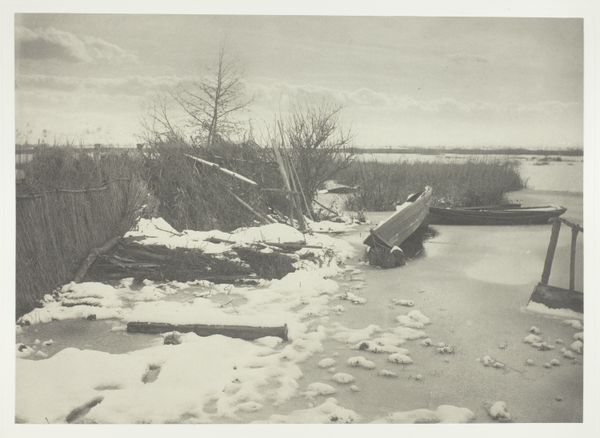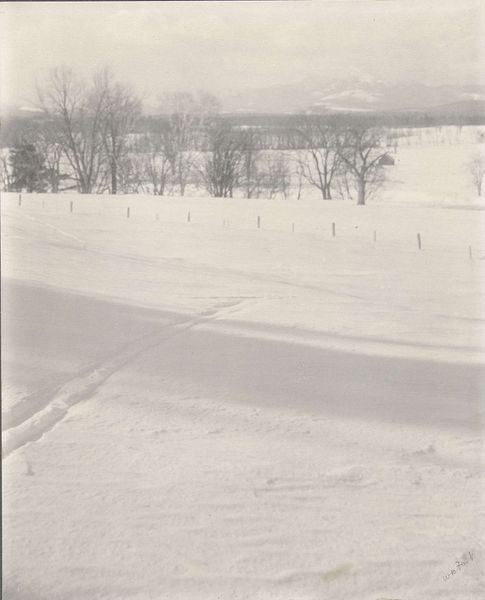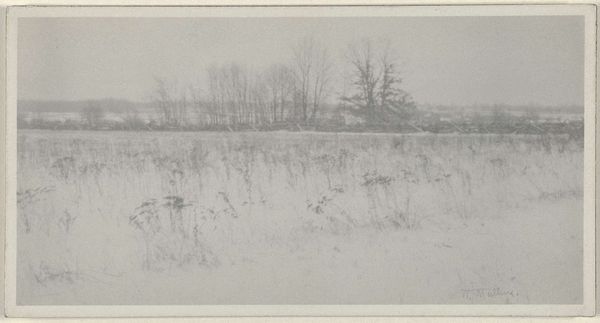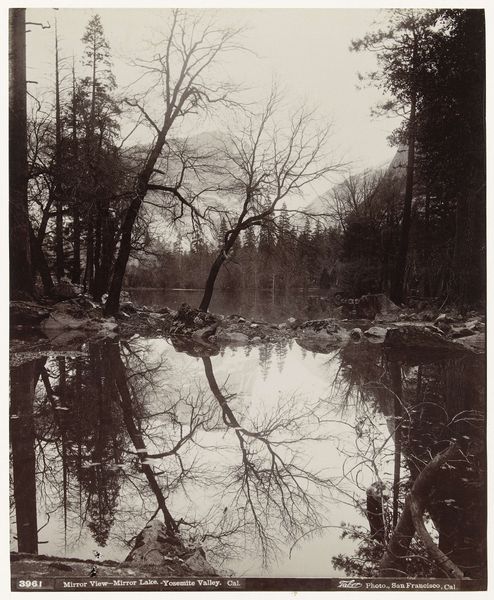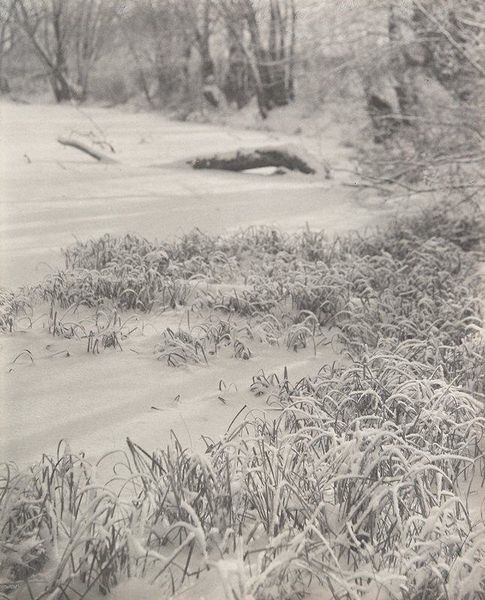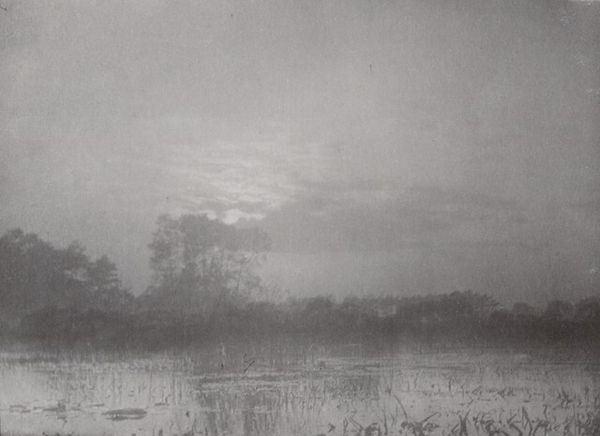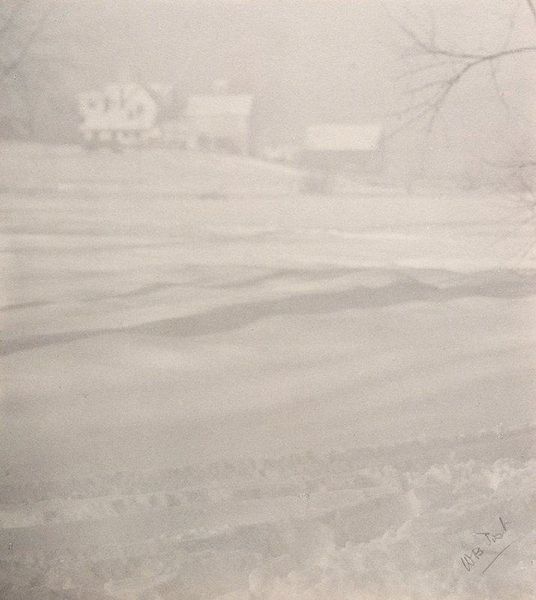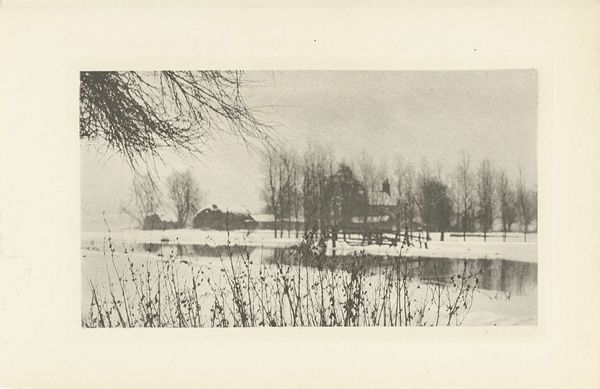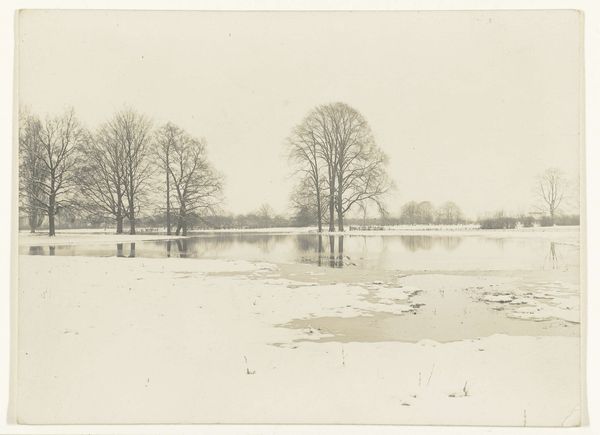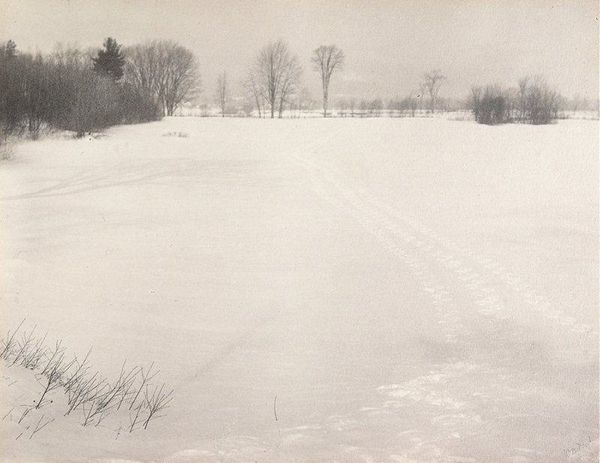
Dimensions: height 241 mm, width 174 mm
Copyright: Rijks Museum: Open Domain
Curator: Standing before us is a gelatin silver print, "Sneeuwlandschap," or "Snow Landscape," by William Boyd Post, likely captured between 1900 and 1920. The image whispers of Impressionism, composed en plein air. Editor: It feels...bleak. Serene, but undeniably bleak. The monochrome palette heightens that sense of quiet desolation. Curator: Absolutely. This work emerges from a time when photography was fighting for recognition as art. Figures like Post strategically deployed techniques we see associated with painting. Consider the focus; it isn't razor sharp. Instead, Post softens the edges, giving a romantic quality that aligned with established notions of art and beauty. Editor: The blurring is deliberate. Look at the ghostly trees in the background – they almost resemble figures from folklore. They are archetypes rather than specific forms, a collective representation. They lend the image an aspect of enduring narrative and cultural weight. Winter as a moment for spiritual endurance or retreat. Curator: Right, photography, especially landscape photography, has long played a role in constructing national identity, especially in relation to land and wilderness. Early nature photographers promoted conservation efforts, showing pristine scenes but always revealing selective aesthetics that can be seen as an idealized, often nationalistic vision of "pure nature." The photographic gaze here becomes complex given the softened view. Is Post endorsing romantic idealization, or critiquing it by offering the "truth" that the view is softened by snow or obscured vision? Editor: That ambiguity feels central. The reeds in the foreground could symbolize resilience – life persisting even under harsh conditions. They remind viewers of nature's capacity to endure hardship while carrying with it both cultural memories of perseverance and psychological markers of hope during harshness. Curator: Yes, the winter season in landscape imagery can act as a powerful reminder of nature's cycles, touching upon mortality, survival and human relationship to climate and temporality. But even further the photograph as an object serves as evidence to the passage of time. Editor: In its subdued tonality, Post's landscape becomes less a picture and more a window into quietude; its cultural reverberations speak of introspection against a landscape that demands persistence. It reminds one how symbolic gestures persist and adapt throughout our histories. Curator: It certainly does give one much to consider, and I appreciate learning how his perspective can offer further reflections for our visitors to contemplate too.
Comments
No comments
Be the first to comment and join the conversation on the ultimate creative platform.

